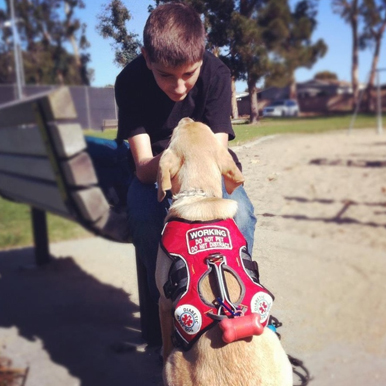
1. Study on Accuracy of Diabetes Alert Dogs in a Real-World Setting |

![]()
Background: Diabetes alert dogs (DADs) are growing in popularity as an alternative method of glucose monitoring for individuals with type 1 diabetes (T1D). Only a few empirical studies have assessed DAD accuracy, with inconsistent results. The present study examined DAD accuracy and variability in performance in real-world conditions using a convenience sample of owner-report diaries.
![]() Method:
Eighteen DAD owners (44.4% female; 77.8% youth) with T1D completed diaries of DAD alerts during the first year after placement. Diary entries included daily BG readings and DAD alerts. For each DAD, percentage hits (alert with BG ≤ 5.0 or ≥ 11.1 mmol/L; ≤90 or ≥200 mg/dl), percentage misses (no alert with BG out of range), and percentage false alarms (alert with BG in range) were computed. Sensitivity, specificity, positive likelihood ratio (PLR), and true positive rates were also calculated.
Method:
Eighteen DAD owners (44.4% female; 77.8% youth) with T1D completed diaries of DAD alerts during the first year after placement. Diary entries included daily BG readings and DAD alerts. For each DAD, percentage hits (alert with BG ≤ 5.0 or ≥ 11.1 mmol/L; ≤90 or ≥200 mg/dl), percentage misses (no alert with BG out of range), and percentage false alarms (alert with BG in range) were computed. Sensitivity, specificity, positive likelihood ratio (PLR), and true positive rates were also calculated.
![]() Results:
Overall comparison of DAD Hits to Misses yielded significantly more Hits for both low and high BG. Total sensitivity was 57.0%, with increased sensitivity to low BG (59.2%) compared to high BG (56.1%). Total specificity was 49.3% and PLR = 1.12. However, high variability in accuracy was observed across DADs, with low BG sensitivity ranging from 33% to 100%. Number of DADs achieving ≥ 60%, 65% and 70% true positive rates was 71%, 50% and 44%, respectively.
Results:
Overall comparison of DAD Hits to Misses yielded significantly more Hits for both low and high BG. Total sensitivity was 57.0%, with increased sensitivity to low BG (59.2%) compared to high BG (56.1%). Total specificity was 49.3% and PLR = 1.12. However, high variability in accuracy was observed across DADs, with low BG sensitivity ranging from 33% to 100%. Number of DADs achieving ≥ 60%, 65% and 70% true positive rates was 71%, 50% and 44%, respectively.
![]() Conclusions:
DADs may be able to detect out-of-range BG, but variability across DADs is evident. Larger trials are needed to further assess DAD accuracy and to identify factors influencing the complexity of DAD accuracy in BG detection.
Conclusions:
DADs may be able to detect out-of-range BG, but variability across DADs is evident. Larger trials are needed to further assess DAD accuracy and to identify factors influencing the complexity of DAD accuracy in BG detection.
For enquiries info@jothydev.net.
Please visit: jothydev.net | research.jothydev.com | diabscreenkerala.net | jothydev.com/newsletter
